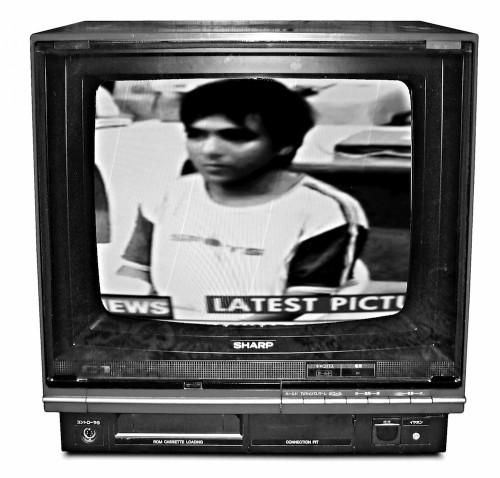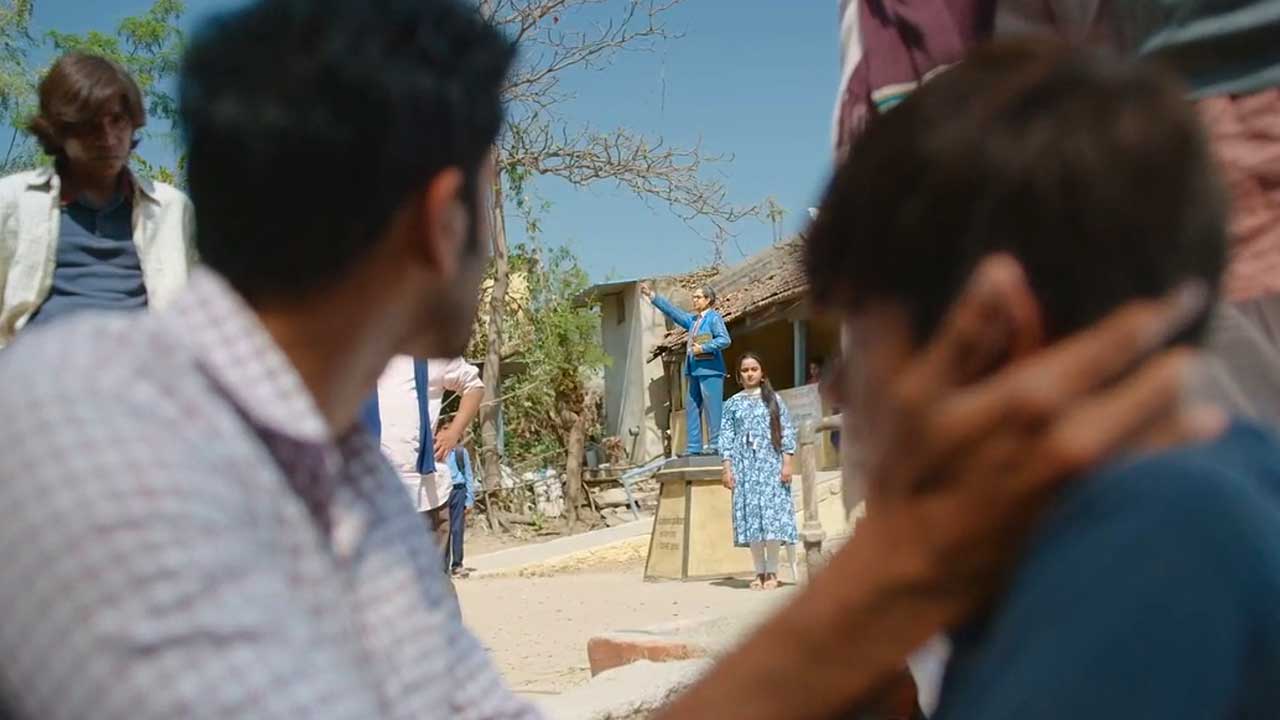On many occasions, I’ve asked teachers of schools, colleges and other educational institutions whether they have bothered to find out who was the first person to declare that mango is the king of fruits, rose is the king of flowers or lion is the king of the jungle – all sayings that they have been sharing with their students for decades. The answer has always been a no. Lakhs and crores of people have been hearing and passing on these sayings for generations without knowing anything about their authors, without dwelling on the process of their creation. In an era when modern technology did not exist and the means of communication were rudimentary, it was natural that the society had no option but to accept and repeat the information given by the opinionated leaders and the interpreters. But with the advent of technology, the sources of any piece of information – even if it is meant for entertainment – can be explored and the information can be tested and verified at different levels. Looking for logic can also be one of the techniques for testing and verifying any piece of information.
The way in which mango, rose and lion are being projected can be the view of a person or persons. But it is not information. Presenting a view or a thought as information is an art in which communicators are trained. In modern-day journalism, analyses and thoughts are often presented as information. The journalists are also trained in the art.
Placing mango, rose and lion at a higher pedestal is a political thought. Logically thinking, where is the need to declare mango or any other fruit as king? All flowers are, well, flowers. Why should one of them be the king? Don’t stories with such concepts promote a particular political ideology? Don’t they unconsciously condition you to accept the rule of a king?
When I asked the teachers about the source of the sayings about mango, rose and lion and applied logic – the teachers and others who had been repeating these stories before children – they were forced to pause and ponder. And it is not only a question of mango, rose and lion. There are tons of such material but no one knows what the source is.
People form their opinions on any issue or subject on the basis of some material. This material may be something published in a newspaper or magazine or they might have heard it from someone. But why do we show no desire to know about the person or persons who are the sources of the material we are basing our opinions on? There is little doubt that if we know about the political inclinations of the source of the material, then logic can lead us closer to the truth about the issue or the subject. But in a society that has lost its way, knowing or identifying the source becomes a complicated exercise. Firstly, there is an attempt to protect its identity and even it is revealed, the capacity to understand the true nature of the source is not allowed to develop. For instance, we look for political inclinations only in and around political parties. But religions and cultures also have their own political ideology. If a reader, listener or viewer, after reading, listening or hearing material from different sources, thinks logically, he can form an unbiased opinion.
 In this era of information technology, we get different pieces of information vis-à-vis politics. The information that is most effective, ultimately, proves to be decisive. The developments in information technology have come about recently. They have created an instant media and the opinions formed on information sourced through them are fleeting. On the other hand, books can build a more permanent opinion. There are many instances in our society of a particular book creating an opinion and perpetuating it from one generation to the next, with none of its readers trying to explore the source of its material or attempting to verify it through other material.
In this era of information technology, we get different pieces of information vis-à-vis politics. The information that is most effective, ultimately, proves to be decisive. The developments in information technology have come about recently. They have created an instant media and the opinions formed on information sourced through them are fleeting. On the other hand, books can build a more permanent opinion. There are many instances in our society of a particular book creating an opinion and perpetuating it from one generation to the next, with none of its readers trying to explore the source of its material or attempting to verify it through other material.
The proliferation of TV channels has brought with it hordes of sadhus, mahatmas and religious leaders. Their sermons are beamed daily into our homes. They often quote from religious scriptures to make their point. But some listeners say that when they tried to verify the truth of their quotations with the help of the original sources, they could not find them anywhere and sometimes they even discovered that what the books referred to said was just the opposite of what the sermonizer claimed it said. Whenever someone says or teaches something, there is an objective behind it. That objective should be clear before us. Those who do not try to identify or verify the objective become victims of blind faith. Their mental horizon shrinks, their intellect gets blunted and they become conditioned to believe everything they read or hear. This is a trap that does not let go of you all your life. A student once told me that his school had been a special type. His education gave him a certain mindset and his mind became like a computer hard disk that is full. It cannot hold anything new. So, he cannot understand or assimilate any logical and modern idea. I can only sympathize with the pain of the student.
Fixed opinions
Take the instance of the limited knowledge that the people of the Hindi belt have about social reform movements. For them, social reform began and ended with Raja Ram Mohan Roy. The fact is that sati was practised only among a small section of the Hindus. But they believe what they believe because they have formed their opinion on the basis of a published work and presumed that it must be true and that the writer could not have been actuated by self-interest. This is a formulation in which most of the newly educated have complete faith. They have a similar faith in the media, which, of course, is misplaced. The media is a part of the political system. Any reader or viewer generally forms his opinion on the basis of one or two newspapers or TV channels. It will be wrong to presume those newspapers or TV channels are absolutely truthful and unbiased. Sometimes, it so happens that what is presented by the media is not contradicted by anyone. But that does not mean it is true. It should be tested on the touchstone of logic. For instance, a TV channel was presenting a programme on the Valmiki caste. At the end of the programme, the presenter said that the Mughal rulers had placed two options before the Valmikis: either convert to Islam or become a sanitation worker. Now, who will be interested in contradicting this opinion? Probably no one, because the interests of no individual or group are hurt if this claim is accepted as being true. Only when the interests of a person and/or group are hurt by a claim will they contradict it. But who will take the trouble of contradicting a social untruth? But at the same time, such untruths distort history. In fact, one does not even need to pore over books to contradict this claim. Nepal was a Hindu nation. No one forced members of the Valmiki caste living there to convert to Islam. Why were then the Valmikis of Nepal pushed into manual scavenging? Nepal was never ruled either by the Mughals or the British.
The sources which are interested in inculcating a certain mindset hope that their readers, viewers and listeners imbibe only what is being conveyed to them.
Opinions do change
The ability and desire to explore the sources of a material and their motives normally comes with experience. There are many issues about which now I do not think in the way I used to earlier. For example, I knew about Kashmir only as much as an average Hindi reader knows because the sources of knowledge about Kashmir did not change. We were fed on a particular brand of political-cultural material about Kashmir. Consequently, we developed a “communal attitude” towards Kashmir. But with the changes in the sources came changes in attitude. And the new attitude was more in consonance with the republican structure of the country. For me, one of the new sources was my research on the Cultural Front of Kashmir. The front was constituted by cultural activists to protect and preserve Kashmiriyat in the wake of the sudden attack on Kashmir by Pakistani tribesmen in October 1947. The Kashmir of that era proved that no language is associated with any religion. Authors started writing in Kashmiri instead of Urdu.
Another source in Hindi that helped me understand the real situation of Kashmir was socialist writer Ashok Seksaria’s long essay Ek Sunhare Sapne Ka Dukhant (Tragic End of a Golden Dream). That essay set me thinking whether Hindi readers were deliberately kept in the dark about the real history of Kashmir. In his essay, he has mentioned that marriages between Hindus and Muslims were common in Kashmir and that there were surnames like Dar, Bhatt, Rishi, Kaul and others that did not indicate the religion of the person. Then, the third source of knowledge about Kashmir was a visit to the state. I found that the local newspapers there carried the news of the demolition of Babri Masjid in the inner pages, as if it was just another small incident.
Similarly, Rajiv Mittal and Urmilesh have mentioned that in the fourteenth century, a Ladakhi tribal chieftain’s son, Rinchin, had crossed the Zozila pass and invaded Kashmir. He became its ruler. He was a Buddhist but he was so deeply influenced by the atmosphere of the valley that he decided to become a Shiva bhakta. But the Pandits of Kashmir blocked his entry into Hinduism saying that he did not belong to a high varna. A disappointed Rinchin then decided to embrace Islam because the Muslims were least bothered about his varna. And that was the beginning of the Muslim rule in the Kashmir valley. Knowledge of these facts is enough to change one’s perspective on Kashmir. In the democratic set-up, with reference to Kashmir, all things barring the issue of autonomy are being described as mainstream. This is because of the complete lack of material on the real history of Kashmir and the ground situation there. The same can be said about Manipur. In a democracy, demand for autonomy is being equated with secessionist aspirations. Such misunderstandings are the result of the misplaced confidence that one knows everything worth knowing about something. One must be alive to the dangers of imbibing any information or material that comes one way.
Published in the April 2015 issue of the FORWARD Press magazine




